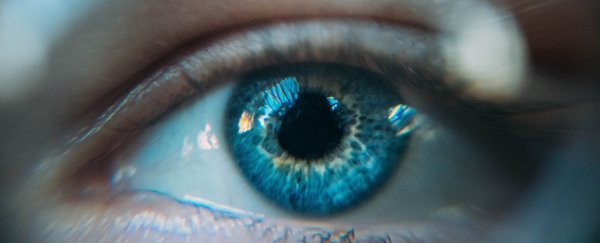In a historic move, the Food and Drug Administration on Tuesday approved a pioneering gene therapy for a rare form of childhood blindness, the first such treatment cleared in the United States for an inherited disease.
The approval signals a new era for gene therapy, a field that struggled for decades to overcome devastating setbacks but now is pushing forward in an effort to develop treatments for haemophilia, sickle-cell anaemia, and an array of other genetic diseases.
Yet the products, should they reach patients, are likely to carry stratospheric prices – a prospect already worrying consumer advocates and economists.
Philadelphia-based Spark Therapeutics, which makes the childhood-blindness treatment, said it will not announce the price until January. Analysts speculate it could be as much as US$1 million for both eyes.
Earlier this year, the FDA approved two other treatments it considers gene therapy. Those approaches, which target blood cancers, involve removing immune cells from patients, reprogramming them genetically in the lab to attack cancer, and returning them to the patients.
The eye remedy cleared Tuesday represents a classic goal of gene therapy – to directly treat disorders that are caused by a faulty gene.
The patients in the study have a defective gene called RPE65, which is responsible for producing a protein that makes light receptors work in the eye. About 1,000 to 2,000 people in the United States have inherited retinal diseases related to this gene.
The new treatment, called Luxturna, is injected into the eye and uses a benign virus to deliver healthy copies of the gene to the retina. The treatment was approved for both children and adults with a defective RPE65 gene.
"Today's approval marks another first in the field of gene therapy – both in how the therapy works and in expanding the use of gene therapy beyond the treatment of cancer to the treatment of vision loss," said FDA Commissioner Scott Gottlieb in a statement.
The milestone, he said, "reinforces the potential of this breakthrough approach in treating a wide-range of challenging diseases".
While Luxturna does not represent a cure or result in perfect vision, it can substantially improve eyesight, according to researchers involved in its development.
Children with the gene mutation often are diagnosed at an early age with disorders such as Leber congenital amaurosis or retinitis pigmentosa.
Over time, their limited vision typically gets worse, resulting in night blindness and a loss of peripheral and central vision. Eventually, almost all end up completely blind.
Christian Guardino, a high school senior who participated in the clinical trial for Luxturna, said in an interview in October that his life got "a lot better" after he had the therapy a few years ago. "It's incredible," said the Long Island resident, who competed this year on NBC's America's Got Talent.
Though Guardino is still visually impaired, "he can now go out at dusk, which he couldn't before, and he has seen stars for the first time," said his mother, Beth Guardino. "And he can read my facial expressions and know whether I am happy or not so happy."
The gene therapy field was derailed years ago after a series of high-profile failures, including the 1999 death of teenager Jesse Gelsinger who was participating in a University of Pennsylvania clinical trial for a rare liver disorder. Today, there are hundreds of gene-therapy trials going on.
The FDA said that Luxturna's efficacy was shown in a pivotal study that measured the ability of 31 patients to navigate an obstacle course at various light levels. The group who received Luxturna had significant improvements in their ability to complete the course at low light levels, compared to the control group.
Forty-one patients have been treated with the therapy at the University of Iowa and Children's Hospital of Philadelphia (CHOP), from which Spark Therapeutics was created in 2013.
The treatment's long-term effectiveness remains unclear, though researchers have noted that the first three patients to receive it in 2007 are in their 20s and 30s and still have improved vision.
An FDA advisory committee unanimously recommended in October that Luxturna be approved. The therapy is expected to be available in select treatment centers late in the first quarter of 2018.
Spark Therapeutics chief executive Jeffrey Marrazzo has talked repeatedly about the challenge of setting a price for a treatment that is designed to be administered once but provide benefits over years or even a lifetime.
He has said he was considering several factors in weighing the price, including the value of a patient being able to work because of improved vision and a reduced need for caregiving.
In a draft report, the Institute for Clinical and Economic Review, which evaluates evidence on the value of medical treatments, said that if the price were set at US$1 million, that would make the treatment "unlikely to be a cost-effective intervention at commonly used cost-effectiveness thresholds".
The Boston-based nonprofit acknowledged, however, that payers weighing coverage for ultra-rare diseases often give special weight to other benefits.
Much of the work that led to Luxturna's development was conducted at Penn and CHOP. Lead researchers included Jean Bennett, an ophthalmologist at Penn's Perelman School of Medicine; her husband, Albert Maguire, an ophthalmologist at CHOP; and Katherine High, a former CHOP researcher who is president of Spark Therapeutics.
Bennett and Maguire began their research on congenital blindness by working in mice and dogs.
They reported in 2001 that they and other scientists had improved the sight of three blind dogs with a canine form of the genetic disease, allowing them to navigate a dimly lit obstacle course. The couple adopted two of the dogs, a mother-son pair named Venus and Mercury.
The two gene therapies that the FDA approved earlier this year were Novartis' Kymriah, which is for childhood leukaemia that doesn't respond to other treatments and Gilead Sciences' Yescarta, which is for hard-to-treat lymphoma in adults.
2017 © The Washington Post
This article was originally published by The Washington Post.
